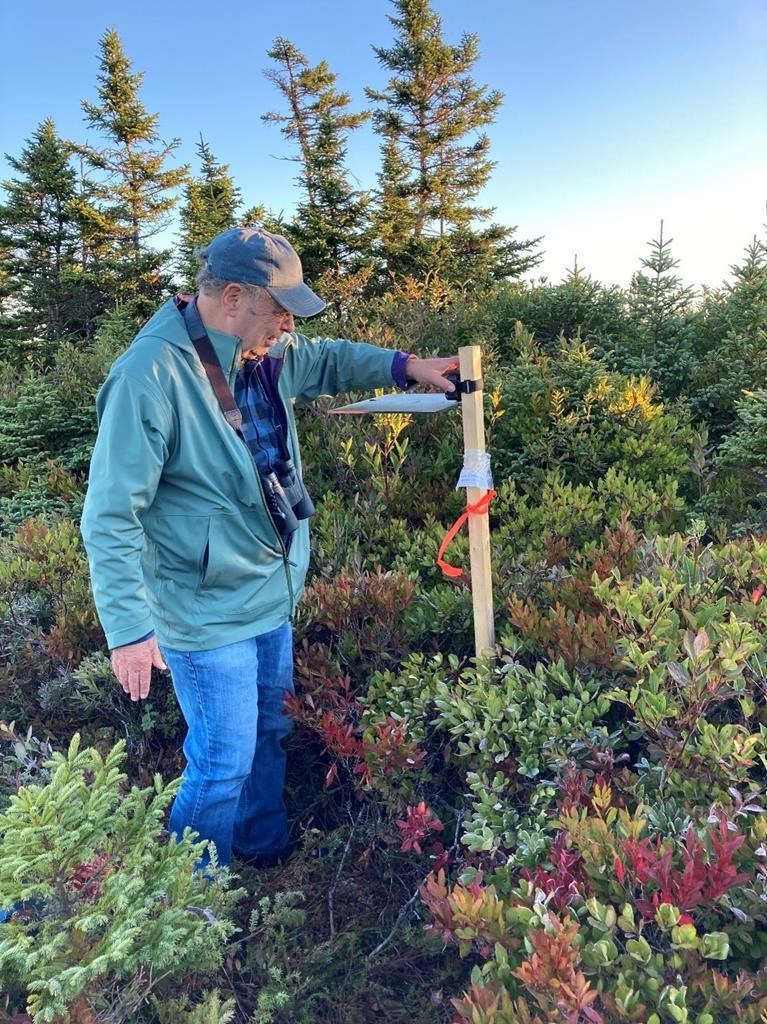HALIFAX — Environmental researcher John Kearney says the whirring blades of a proposed 13-turbine wind farm in Nova Scotia may cut greenhouse gases, but the risks they pose to migrating birds are too high.
The 74-year-old former consultant to the wind industry has in recent years set up acoustic monitoring in southwestern Nova Scotia, documenting species ranging from black-capped chickadees to spotted sandpipers as they call out during autumn flights.
"I'm speaking from the perspective of a person who supports both the objectives of wind power and preserving biodiversity, and here they come in conflict," he said in a recent interview, shortly after submitting written submissions to the province objecting to the proposed project on a peninsula west of Yarmouth.
"To me, it's quite clear this wind farm should never happen."
Kearney has a PhD in environmental anthropology — which involves relationships between humans and nature. He came to his conclusion after finding that bird calls just south of the proposed Wedgeport Wind Farm averaged 538 per hour after sunrise.
He says this is nearly equal to the intensity of Brier Island, N.S., located further west, which was recently cited in the Proceedings of the Nova Scotian Institute of Science as "one of the migration hot spots of northeastern North America."
To Kearney, rejecting the project would help preserve the avian songs, but industry proponents counter that there's limited evidence to show the proposed coastal location threatens bird populations.
In an email, Daniel Eaton, the project director at Vancouver-based Elementary Energy, noted the firm and its partners, Stevens Wind and Sipekne'katik First Nation, are responding to the Nova Scotia government's goal of a 53 per cent reduction in greenhouse gas emissions by 2030.
Eaton said that in 2025, the first year of potential operation, the project is anticipated to offset 112,750 tonnes of carbon emissions — which is roughly equivalent to the yearly output of 25,000 gasoline-powered cars.
"We agree there are a variety of habitat types in southwestern Nova Scotia that are important to migratory birds and are appreciative of the work that Mr. Kearney has undertaken to collect information on migratory bird activity across a number of sites in southwestern Nova Scotia," Eaton wrote on Monday.
However, he added, "we stand by the work done by our consultants, including their work to estimate potential bird mortalities associated with our project." The company's submission in the environmental review argues once "standard industry mitigation measures" are in place, the impact of the turbines on the birds is "not significant."
It notes their own field survey identified 100 bird species within and outside the project area, and about 16,000 individual birds. The proponents predict the project will cause about 36 bird deaths a year, citing a model developed in 2016 from Scottish Natural Heritage, an environmental advisory body.
Kearney is critical of the model and questions why theoretical data is being used when the proponent could be asked to study functioning wind turbines near the site to obtain mortality rates occurring along the windy and foggy Nova Scotia coast.
And he returns to his acoustic data, saying it gives compelling, comparative evidence that the proposed farm is in the middle of a migration corridor.
The Nova Scotia Bird Society has also objected to the wind farm, saying its members have observed the concentrations of birds passing overhead, "feeding on berries in the barrens and capturing insects in the trees."
"We understand first hand the interconnections between terrestrial and marine habitats, which result in a high species richness," wrote Anthony Millard, president of the society.
Mikaela Etchegary, a spokeswoman for the provincial Environment Department, said the minister, Tim Halman, "will consider the facts, science, and comments from the public and Mi’kmaq," and render a decision by May 4.
Scott Leslie, a naturalist and the author of "Woodland Birds of North America", urges the Progressive Conservative government to take Kearney seriously.
"He is one of the pioneers of using the latest bio-acoustical listening technology in Nova Scotia .... This is a powerful tool for assessing small migratory birds, and one of the most cost effective ways for people to establish whether or not a particular place is important for small migrants," he wrote in an email.
This report by The Canadian Press was first published April 19, 2023.
Michael Tutton, The Canadian Press
Note to readers: This is a corrected story. A previous version said Nova Scotia's goal was a 53 per cent reduction in greenhouse gas emissions by 2023.




